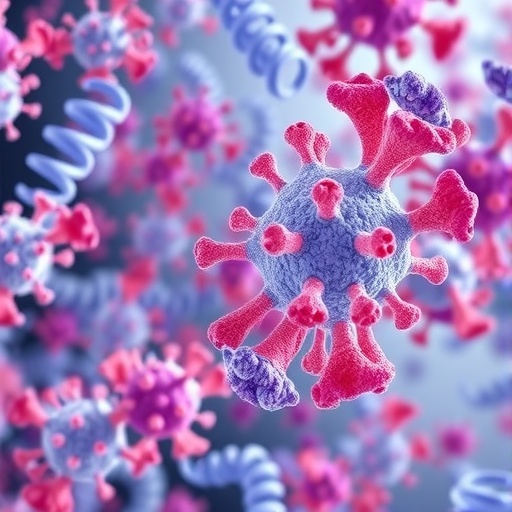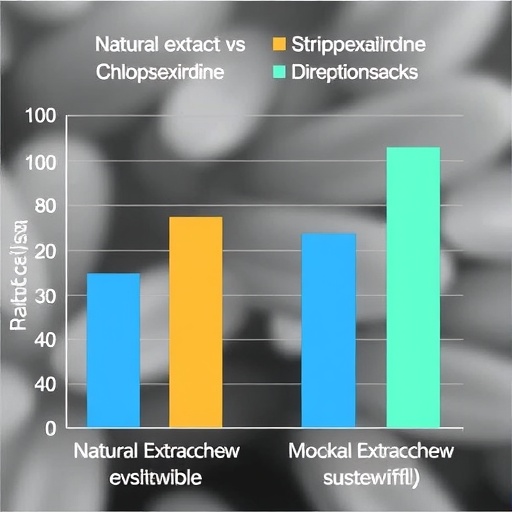A groundbreaking study published in Nature Communications unveils the intricate and multidimensional protein signatures that characterize the host immune response in hospitalized patients suspected of infection at the emergency department (ED). This research, conducted by Sinha, Spicer, Bhavani, and colleagues, challenges traditional diagnostic approaches by leveraging advanced multivariate protein analysis to disentangle the complex biological networks triggered during acute infection. The findings illuminate the dynamic interplay between pathogens and host defense mechanisms, promising a new era of precision medicine in critical care.
Hospitals worldwide face immense challenges when managing patients presenting with suspected infections. Rapid, accurate diagnosis remains elusive, often hampered by reliance on conventional biomarkers such as C-reactive protein (CRP) or procalcitonin, which offer limited specificity and sensitivity. This study transcends these limitations by employing high-dimensional protein profiling to capture the broader immune landscape. By analyzing a rich panel of plasma proteins, researchers were able to identify distinct immunological patterns that correspond to different infection outcomes and severities.
At the heart of this research lies a sophisticated multivariate analytical framework that integrates hundreds of protein measurements simultaneously. Traditional single-analyte tests fall short in characterizing the complex host responses evolved against heterogeneous microbial challenges. Here, the team utilized multiplexed proteomics combined with machine learning algorithms to model the host response as a multi-protein network, revealing subtle yet clinically meaningful variations that differentiate bacterial from viral infections and even non-infectious inflammatory conditions.
.adsslot_VmWLOShiQz{ width:728px !important; height:90px !important; }
@media (max-width:1199px) { .adsslot_VmWLOShiQz{ width:468px !important; height:60px !important; } }
@media (max-width:767px) { .adsslot_VmWLOShiQz{ width:320px !important; height:50px !important; } }
ADVERTISEMENT
A key revelation from the study is the identification of specific protein clusters that serve as signatures of host-pathogen interaction stages. Early innate immune markers, such as components of the complement cascade and acute phase reactants, showed distinct elevation patterns in bacterial infections, while interferon-stimulated proteins were predominately associated with viral etiologies. These findings not only enhance diagnostic precision but also offer insights into the temporal dynamics of immune activation in the acute setting.
Importantly, the researchers demonstrated that this multivariate protein landscape could predict clinical outcomes with impressive accuracy. Patients exhibiting protein profiles indicative of hyperinflammation were more likely to experience complications such as sepsis or organ dysfunction. Conversely, signatures suggestive of immunosuppression correlated with poorer recovery trajectories. This stratification underscores the potential utility of protein-based assays to guide tailored therapeutic interventions and improve prognostication.
The methodology employed involved enrolling a large cohort of hospitalized individuals suspected of infection in the ED, capturing plasma samples within hours of presentation. Employing cutting-edge mass spectrometry and immunoassays, the team generated an extensive proteomic dataset. Advanced computational models were then applied to decipher patterns across diverse patient subgroups, accounting for confounding factors such as age, comorbidities, and infection source. This comprehensive approach strengthens the generalizability of the findings across clinical contexts.
Beyond diagnostic applications, the study opens new avenues for biomarker discovery that might inform novel drug targets. By mapping the protein interactions underpinning dysfunctional immune responses, researchers can identify candidate molecules for therapeutic modulation. For instance, proteins implicated in exaggerated cytokine release syndromes could be targeted to mitigate immune-mediated tissue damage, thereby reducing morbidity and mortality amongst critically ill patients.
This research also highlights the potential integration of multivariate protein profiling into rapid point-of-care diagnostic platforms. While current bedside diagnostics are limited to a handful of markers with narrow diagnostic windows, harnessing multiplex technologies could revolutionize emergency medicine. By providing clinicians with comprehensive immune response signatures in near real-time, treatment decisions could be more accurately aligned with the underlying pathophysiology rather than empirical guesswork.
The implications extend beyond the hospital walls as well. Understanding the heterogeneity of host response at the protein level could reshape public health strategies, especially during outbreaks of infectious diseases. Enhanced characterization of immune phenotypes may facilitate risk stratification in the community, optimizing resource allocation and early interventions to prevent disease progression and reduce transmission.
While the promise of this approach is immense, the study’s authors acknowledge challenges surrounding standardization, assay cost, and the need for integration with existing clinical workflows. Further validation through multicenter trials and technical refinements will be critical before widespread clinical adoption. Nevertheless, the combination of high-throughput proteomics and computational analytics charts a lucid path towards personalized emergency care for infection.
In broader scientific discourse, this work exemplifies the power of systems biology in unraveling the complexity of acute inflammatory diseases. The convergence of proteomic technology with artificial intelligence heralds a paradigm shift, where multidimensional data transforms our understanding of disease and enhances patient-centered care. The ED, often a chaotic frontline environment, stands to benefit immensely from these innovations, bolstering diagnostic confidence during critical decision-making moments.
Moreover, the study’s findings could spark multidisciplinary collaborations across immunology, infectious diseases, bioinformatics, and emergency medicine. Cross-pollination of expertise will be vital in refining predictive models and translating them into practical tools. The data-rich nature of this research offers fertile ground for developing novel machine learning algorithms, further optimizing sensitivity and specificity of immune response classifiers.
The importance of early and accurate infection diagnosis cannot be overstated. Missed or delayed treatment exacerbates patient morbidity and augments healthcare costs through prolonged hospital stays and unnecessary antibiotic utilization. By providing a granular proteomic view that transcends traditional markers, this research lays the groundwork for interventions that are both timely and tailored to individual immune landscapes.
From a technological perspective, the successful application of multivariate protein analysis in a real-world emergency setting demonstrates remarkable feasibility. The study’s design acknowledges the operational constraints of busy clinical environments while extracting maximal biological insight. This real-world applicability sets a benchmark for future biomarker discovery studies to aspire to.
Looking ahead, incorporating longitudinal sampling could further elucidate the evolution of host responses during hospitalization. Tracking protein signature trajectories may reveal critical windows for therapeutic intervention and monitor treatment efficacy in real-time. Such dynamic profiling could ultimately culminate in adaptive patient management strategies, continuously refined by evolving biomarker data.
In summary, this transformative research pioneers a novel frontier in emergency diagnostics by harnessing the complexity of the host proteome. It bridges fundamental immunology with clinical pragmatism, offering a beacon of hope for improved outcomes in patients with suspected infections – a notoriously challenging population. As the healthcare community grapples with rising infectious threats, such integrative and precise tools will become indispensable allies in the quest to save lives.
Subject of Research: Host immune response profiling in patients with suspected infection using multivariate protein analysis in the emergency department
Article Title: Multivariate protein landscape of host response in hospitalised patients with suspected infection in the emergency department
Article References:
Sinha, P., Spicer, A.B., Bhavani, S. et al. Multivariate protein landscape of host response in hospitalised patients with suspected infection in the emergency department. Nat Commun 16, 7848 (2025). https://doi.org/10.1038/s41467-025-62848-x
Image Credits: AI Generated
Tags: advanced diagnostic approachescomplex biological networksemergency department infection diagnosishigh-dimensional protein profilinghost defense mechanismshost immune responseinfection outcomes and severitiesmultiplexed proteomicsmultivariate protein analysisplasma protein patternsprecision medicine in critical careprotein signatures





